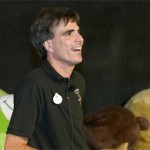With a headline like that, you’re expecting some dieting tips a la Dr. Mehmet Oz, right? Nope. What inspired this post were two things.
First, this morning, we took a walk along the beach and I found myself wondering who lives in these sprawling homes so precariously perched along the water as if challenging the next hurricane to take them out? But the better question is why anyone needs that much space. There are two double-wide homes in particular, next to each other, in competition perhaps. I can’t help but think how much energy must go into maintaining this kind of lifestyle, not to mention the stress on the body/mind.
Second, when we returned to our relatively modest home seven miles inland, I opened up my laptop to Seth Godin’s blog and as often happens found a post that spoke to me. It is built around an article about living more lightly from a devoted backpacker. So, I’m looking around my desk and, yikes! Laptop, printer/phone/fax combo, lamp, another phone, Rolodex, cup of pens, most of which I never use, stapler, holders for this and that, box of mints, post-it notes. Then, the tangle of wires under the desk and the stack files of papers on the floor…let’s not even go there. I’m nauseous.
One of the things you realize as you age is how little you really need to be contented. In a warm climate, it’s even less: a pair of shorts, t-shirt and sandals and you’re dressed. A piece of fruit, half a bagel and tea, and breakfast is done. A good book, a good conversation, a walk in nature — what could be better? Thoreau’s advice (Simplify! Simplify!) rings louder in my ears these days, and I find myself less tempted by the life-is-beautiful catalogs that continue to arrive in my mailbox every week.
That said, I’m the last person to give advice on clutter, so just read the link and see if it opens up a space in your head like it did in mine — the right place to start.
